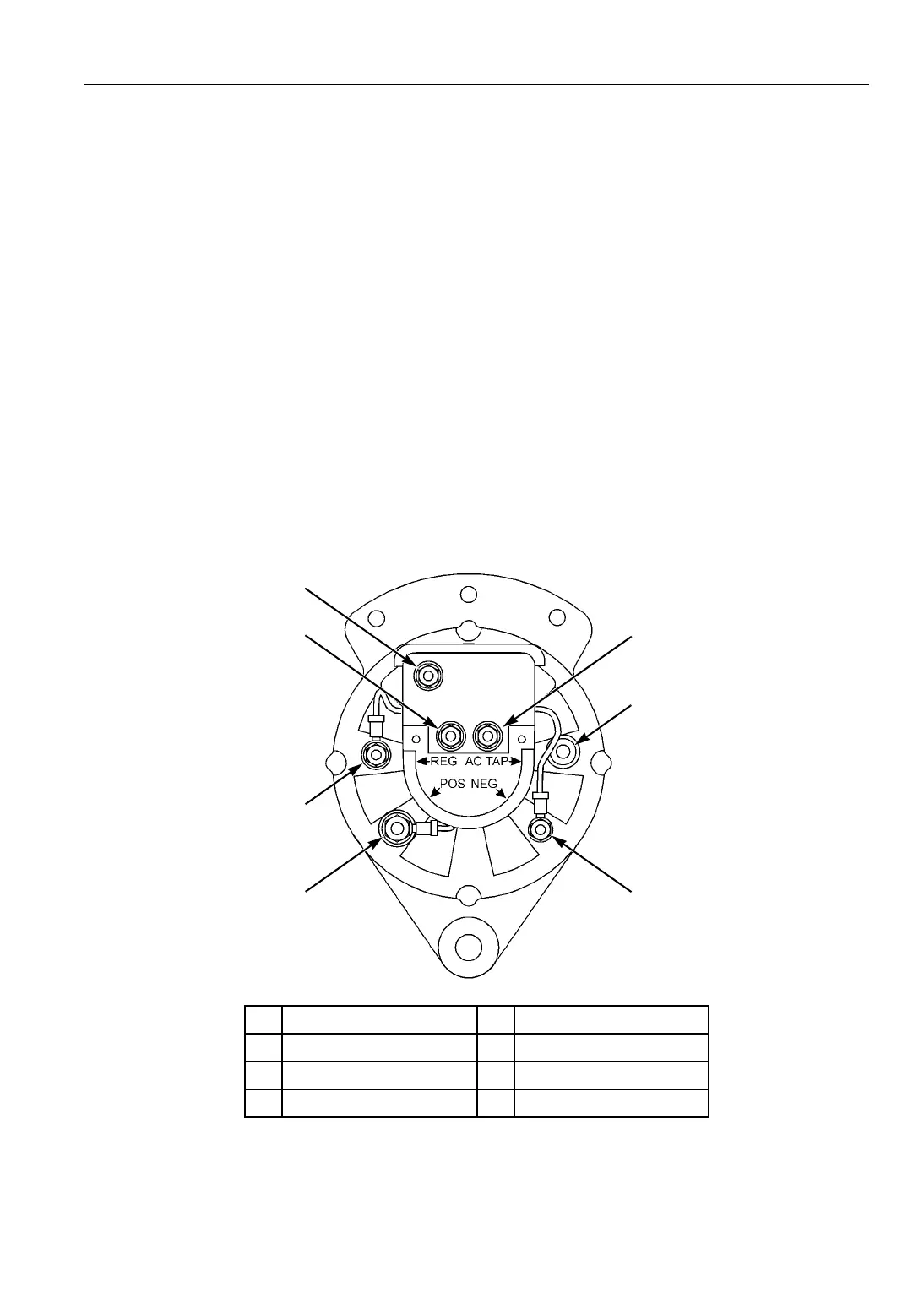81
Electrical Maintenance
Alternator (Prestolite) Charging
System Diagnostic Procedures
General Information
Poor charging performance may not be caused by
a bad alternator. The following conditions can
cause improper battery charging, even with a
good alternator. (See Service Bulletin T&T 388
for more information.)
• A problem may exist in the 2A output circuit
from the alternator to the battery. Check for an
open 2A circuit, loose connections, defective
battery cables or dirty battery terminals.
• The battery must be in good condition and
capable of accepting a charge. Check for a
damaged battery, correct electrolyte level, and
loose or corroded connections.
• The alternator charging output will be low if
the alternator belt or pulleys are defective or
the belt is not properly adjusted. Be sure the
belt is not loose or cracked and the pulleys are
the correct size and in good condition.
• The excitation circuit (EXC circuit) must
supply voltage to the EXC terminal of the
alternator.
• The sense circuit (SENS circuit) must supply
voltage to the sense terminal of the alternator.
• The alternator must be properly grounded.
• The unit control circuits or installed
accessories may be drawing excessive current.
• An overcharged battery is usually caused by a
defective voltage regulator.
2
1
7
6
3
4
5
AGA219
1. EXC Terminal 5. NEG—B- Terminal
2. F2 Terminal 6. POS—B+ Terminal
3. VOLT SENSE Terminal 7. REG—D+ Terminal
4. AC TAP Terminal
Figure 113: Prestolite Terminal Locations

